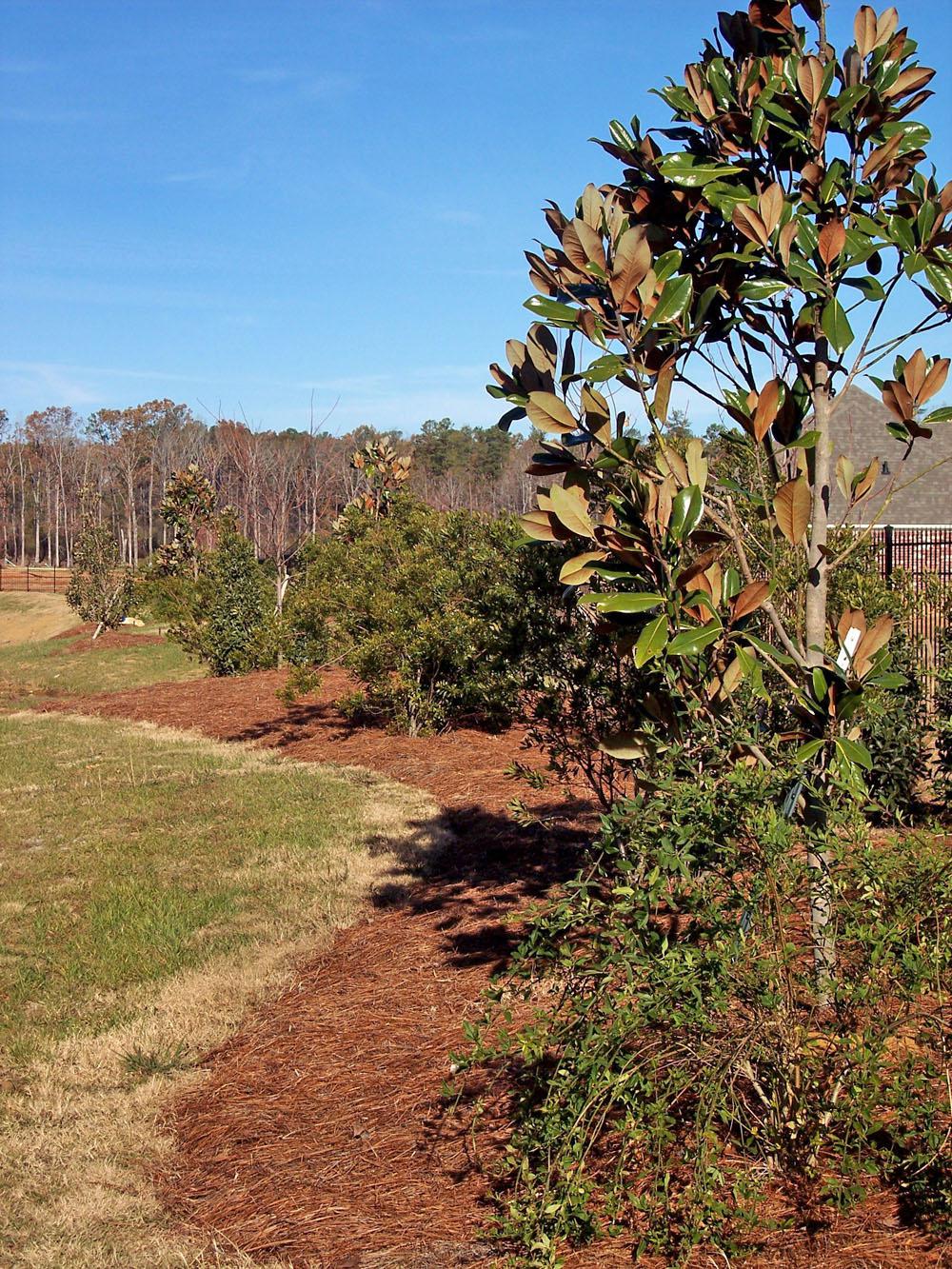Information Possibly Outdated
The information presented on this page was originally released on December 29, 2005. It may not be outdated, but please search our site for more current information. If you plan to quote or reference this information in a publication, please check with the Extension specialist or author before proceeding.
Plants can create a privacy screen
By Norman Winter
MSU Horticulturist
Central Mississippi Research & Extension Center
One common request I hear is from people wanting to create some privacy between them and a neighbor, to quiet a noisy street, or to soften a fence. These are all good reasons for planting a screen of plant material.
The first inclination many have is to plant a straight formal line of the same plant material. While this might work, it doesn't really look natural compared to what you see at the forest's edge. It can also lead to problems later if one dies or if they have a different rate of growth and the formality of the line is broken.
It is best to plant informally and in repetitive clumps using three or four species of plants including evergreens and deciduous plants. If one should die, it will hardly be noticed.
Recently I saw a green screen being planted in front of a new subdivision. They used hollies, magnolias and southern wax myrtles, showy jasmine and maiden grass in clusters of three as well as several taller deciduous trees like red oaks. They also taught us all another lesson by separating the planting or screen from the turf or mowed area.
There are a lot of good choices for plants to use in an informal screen. The Leyland cypress certainly is a good choice especially if simply planted in small clusters. It would also be hard to beat the native Eastern red cedar.
One of the best is the Mississippi Medallion award-winning Little Gem magnolia. This magnolia reaches about 10 feet wide and 21 feet high. The boulevard leading to my street address has used these superbly. Another of my favorite magnolias is the variety D.D. Blanchard. This magnolia has a unique Christmas tree shape, with lustrous dark-green leaves having an orangish-brown underside.
As you can tell from recent columns, hollies are among my favorite plants for screens. Their dark green, shiny leaves contrast well with other shrubs. When spring-freeze warnings send us scurrying to protect plants, I dare say no one covers hollies. They are the storm troopers of the landscape.
Nellie R. Stevens is a hybrid of the English holly, Ilex aquifolium, and the Chinese Holly, Ilex cornuta, and the Mary Nell, cannot be beat. I also like the new red holly hybrids like Cardinal, Festive, Oakleaf, Robin and Little Red.
The cleyera, though not quite as large, has demonstrated it too can be an effective privacy screen. Large mature plantings definitely have the ability to block an undesirable view. Cleyera's shiny bronzy leaf color is particularly nice.
The Southern Indica azaleas like Formosa, George Lindley Taber and Pride of Mobile also make excellent screens in the lower two-thirds of the state.
You might think screens are only for large areas, but the same concept can be applied to small backyards to make the landscape natural and private.
Talk to your Certified Mississippi Nursery Professional about his or her favorite plants to use as privacy screens. Just remember to plant informally, in repetitive clusters or clumps and separate from your lawn area.








